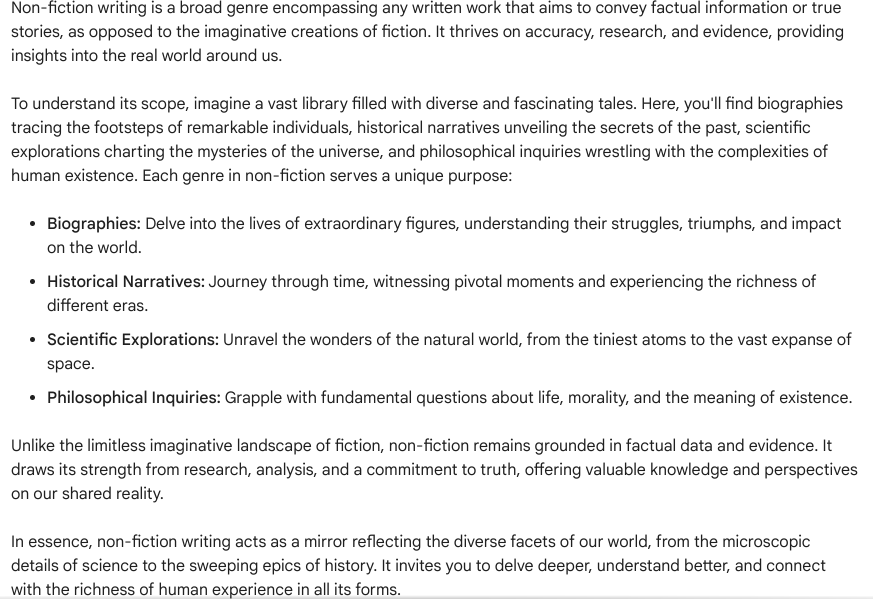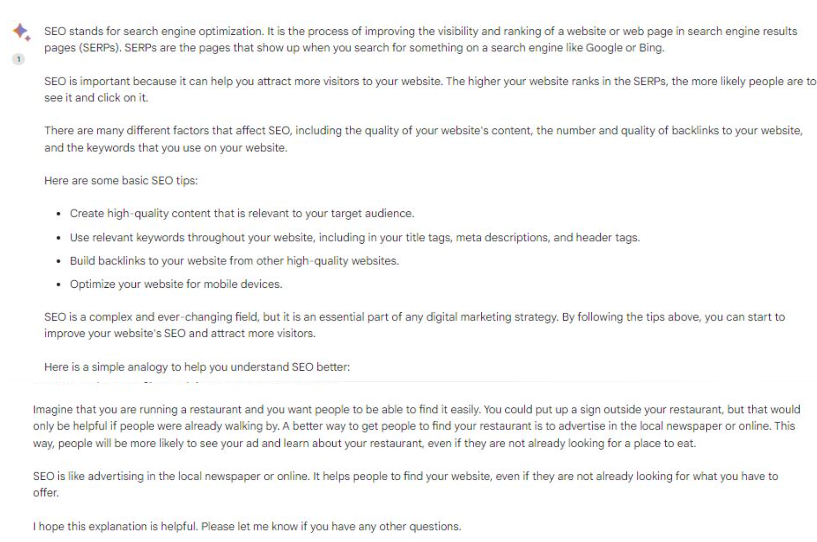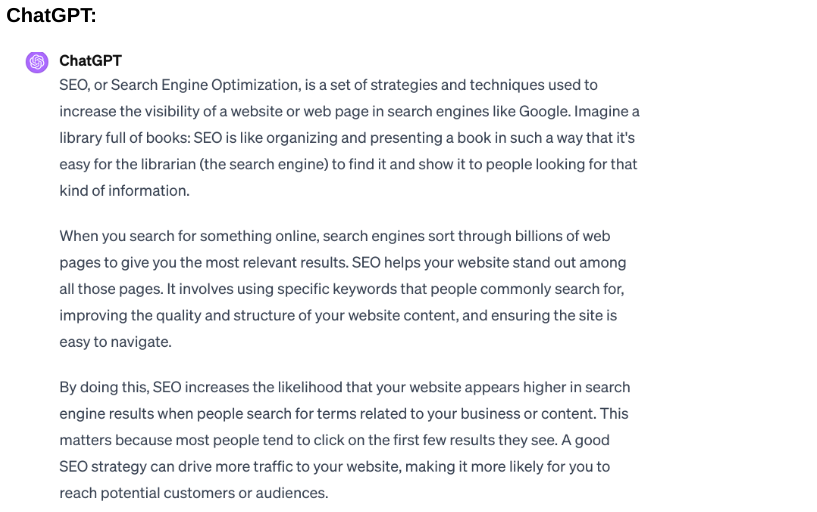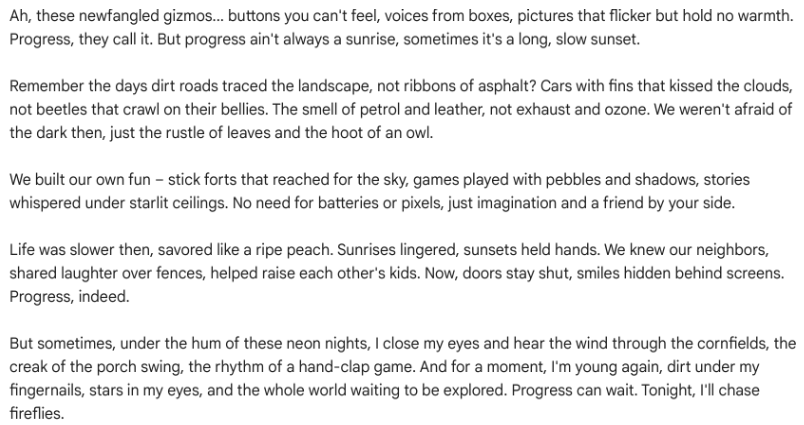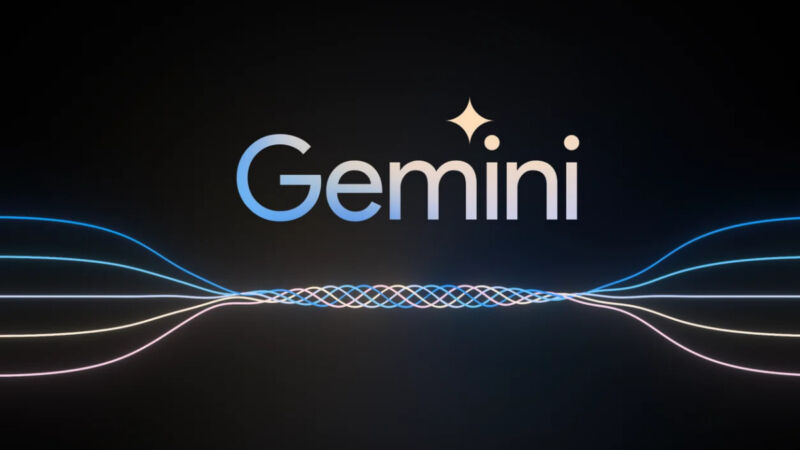Artificial intelligence has seen rapid strides in recent times, and its ability to process natural language has definitely been the subject to much conversation. There are two AI models standing out prominently: Google Bard and ChatGPT.
As these behemoths strive to generate and understand human-like text, a natural question arises:
Bard vs ChatGPT: Which Is Better?
When comparing the two models, it is important to consider how they stack up according to key criteria. Writing style, understanding instructions, mathematical reasoning and creativity are important markers of a good language model. Comparing the two is a great way to explore the two models strengths, weaknesses, and unique skills and how they can be utilised in different ways.
What Is ChatGPT?
ChatGPT is an advanced language model developed by OpenAI, based on the GPT (Generative Pre-trained Transformer) architecture. It’s designed to understand and generate human-like text based on the input it receives. ChatGPT has been trained on a diverse range of internet text sources, enabling it to engage in a wide variety of topics and perform tasks like answering questions, providing explanations, and generating creative content. Its capabilities stem from machine learning algorithms that have analysed large datasets to recognize patterns and nuances in language.
What Is Google BARD?
Bard is a language tool that can be used to explore creative ideas and explain things simply. It’s a Google experiment that can generate text, translate languages, write different kinds of creative content and more.
The language model learns by “reading” trillions of words that help it pick up on patterns that make up language, which allows it to pick up on and reply to your questions in common language patterns.
ChatGPT vs. BARD: How Both Measure Against Our Criteria
Let’s get into it! How do both language models stack up when evaluated through the lens of our criteria?
Parameter 1: Writing Style
We’re dealing with two language models, so of course, the writing style must be considered when evaluating the two. This is a bit more of a subjective criteria, however it’s important to gauge how the two writing styles are different, and which one is likely to be more compatible to you.
Test Question: What is non-fiction writing?
Google Bard:
Google Bard has a more informal, descriptive tone of voice. It captures interest while still explaining coherently what non-fiction writing is. It delves into examples using illustrative language on what each encompasses.
ChatGPT:
ChatGPT is more concise in its approach. It mentions fiction in contrast to non-fiction, and provides examples of types of non-fiction works. Ultimately, it employs a more formal, yet easy to understand voice with less words used.
Parameter 2: Understanding Queries
It is important that these language models are able to interpret user requests well to churn out the most accurate answers tailored to their needs. To gauge how well this is done, we have provided a test question.
Test Question: Explain SEO to a non-digital marketer in 200 words or less.
Google Bard:
Google Bard has done a great job breaking down SEO simply in a way that non-digital marketers would be able to understand. They clarify acronyms and use an analogy to help the user understand why SEO should be considered. They even give tips which allow audiences to understand its practical applications. However, it does exceed the character limit, being around 340 words, even though it could have been easily shortened.
ChatGPT also does a good job at creating a body of text that easily explains what SEO is. They include a library analogy to make it understandable, however it does not take up the bulk of the explanation. This is good as it makes the information presented more concise, and allows it to adhere to the word count (192 words).
When it comes to understanding instructions, we will have to hand it to ChatGPT. While Google Bard provided an easy-to-understand explanation, with tips for practical understanding, ChatGPT was able to do the same in a more concise manner, and adhere to the word count.
Parameter 3: Step By Step Instructions
Often AI language models are used when people want a quick step by step guide on how to complete tasks that aren’t too complex. This is because they are instantaneous and of course, can be useful when you don’t want to spend time browsing the internet. But which of the two is superior in this criteria? Here is a snippet of how they have answered our test question.
Test Question: How do you throw a Christmas party?
Google Bard has numbered steps that are expanded on even more through dot points. These dot points go into more detail about the different elements of each step. This is good for a more holistic approach to Christmas party planning.
ChatGPT:
ChatGPT prioritises brevity in the steps. While it gives ideas and party suggestions, it still holds back from providing a more encompassing guide, and steps such as the first one are quite obvious.
Considering this criteria, Google Bard is better equipped to provide step-by-step instructions due to its use of detail without going overboard.
Parameter 4: Basic Mathematical Reasoning
Let’s be real – whether it’s a child’s maths homework or a simple calculation at the shops, maths isn’t everyone’s strong suit. And the calculator doesn’t provide guidance on where to begin when it comes to punching in the numbers. AI has the ability to undertake complex mathematical equations, but let’s start with the basics.
How does Google Bard vs ChatGPT fare in simple mathematical reasoning?
Test Question: From a box containing 15 blue marbles, 8 red marbles, and 12 green marbles, what is the probability of randomly selecting a red marble?
Google Bard:
Google Bard provides a step-by-step explanation of how the equation is solved and finally the answer. This can be invaluable to those who want to understand the logic behind mathematical reasoning, whether for themselves or to explain it to someone else.
ChatGPT:
If you want an immediate answer, then ChatGPT is your friend! In terms of explanation, the hyperlink in the first picture leads to an explanation in code of how it came up with the answer. While interesting, this may not be the most accessible format to provide an explanation, given that it was not asked for and likely more confusing for the asker.
Basic mathematical reasoning is better suited to Bard in this context. It provided the answer with an easy-to-understand rationale. Though ChatGPT provided a quick answer, it did not provide the best avenue of explanation.
Parameter 5: Creativity
While Maths may not come easy to some, creativity may not come as easy to others. Whether it’s creating poetry, writing a Wedding speech or coming up with eye-catching social media posts, creativity is ultimately subjective. AI is certainly not the shining standard when it comes to creative written work, however it has been known to yield interesting results when fed detailed prompts.
Test Query: Write a monologue from the perspective of an elderly man who is nostalgic for the past (150 words).
Bard:
ChatGPT:
Ah, a prompt to tug at the heartstrings. Both AI models did a great job using evocative imagery and contrasting between past and present. For this particular prompt, ChatGPT did a slightly better job of really tapping into a natural speaking voice that wouldn’t be out of place for an elderly man. Then again, writing is truly subjective, and you may think the opposite! Creative prompts are endless and entertaining, why not give one a go?
How Are Different Industries Experimenting With AI?
Before we go in with our verdict, let’s take a look at how AI is revolutionising various industries:
-
Ecommerce
The ecommerce space has found plenty of reasons to use AI in everyday tasks. AI language models have been invaluable in creating product descriptions, SEO content, social media, and customer service related FAQ.
You may have also encountered AI in automated customer service solutions – whether they are eagerly writing back to answer your pressing question or listening to you in real time! The latter was implemented by Sephora as they launched one of the first Google Assistant implementations. Customers online could just speak aloud and do things such as book beauty services or play quizzes that could inform which products would suit them best.
The downside of relying on AI in this space however would be the potential for lack of knowledge on the respective ecommerce demographic. Data may be inaccurate, and therefore should be heavily vetted to add more nuance and detail to ensure the ecommerce company is truly speaking to their audience. Additionally, if AI becomes a go-to for companies, customer service and creative roles will likely suffer from job cuts.
-
Digital Marketing
Digital marketing and AI have experienced overlap in similar ways to ecommerce. Online content, social media copy, and e-newsletters can all be written by AI language models. Online ads can also be better targeted to the right people at prime times, and social media can be automated by scheduling posts and responding to comments. Digital marketing automation can free up time for marketing teams to shift their focus elsewhere.
However, an overreliance on AI here could lead to a lack of creativity and new ideas. If digital marketing is left solely in the hands of AI, there will be a recycling of content ideas, and less effort given to more out-of-the-box digital marketing ideas. And of course like the ecommerce space, this reliance could lead to job loss.
-
Healthcare Sector
The healthcare sector seems almost untouchable to the power of AI but alas, it has already seen some change. A glance into today’s AI-driven healthcare brings IBM Watson Health to the limelight, aiding doctors in patient care decisions. Then there’s Google DeepMind Health, working on AI tools for disease diagnosis and mental health improvement. Tools such as these can lead to easier and quicker access to many.
There is a strong human aspect to the healthcare system. Seeing a doctor in person and being able to point towards your pain points are things that AI cannot replicate. And because of the lack of true reliability in AI in the healthcare space, it can lead to misdiagnosis, should there not be a proper consultation.
-
IT Sector
AI has affected IT in numerous ways. Automation of tasks such as deploying software and troubleshooting minor problems has freed up time for IT specialists to focus on more creative tasks. In terms of security, AI can detect and respond to threats more quickly, and develop security solutions such as firewalls. Microsoft Azure AI is an example of a program that is used by businesses to improve day-to-day IT operations and develop new services.
However, this can also lead to job displacement and security risks as AI systems can be vulnerable to hacking and potential threats.
-
Retail
AI has done much for the retail industry – from self service cash registers we have grown all too familiar with, to automated inventory management that ensures popular products are in stock, and ensuring there is not too much excess either.
Nike saw the potential for this inventory management, acquiring an AI start-up called Celect for $110 million in 2019. It has allowed them to understand consumer demand in real-time, so it can have needed inventory in the right locations.
You’re probably noticing a pattern now which is yes, AI has and will lead to job loss in the retail industry. It’s one of the industries which many have witnessed firsthand, with self payment options.
These are just a few of the industries that are being affected by AI, and the future sees even more change…
Future Applications & Implications
What does the future hold for AI tools?
Here are a few emerging trends and findings:
- Innovative Uses: AI will find a way to be of use in areas we wouldn’t even expect! Only recently have generated images and audios become a thing, and only more uses will pop up in the future.
- Accessibility: I was absolutely baffled the first time I saw an AI generation of a politician singing a famous song on my social media. I’ve seen many more since then, and it’s still insane to me. Extraordinary AI capabilities are in the hands of ordinary people already, and this will be even more so as time goes on.
- Ethical AI Research: Yep, that’s right. AI is growing and growing fast, and to combat its negative effects, ethical AI research has started emerging. These tools and findings will help businesses avoid negative consequences of AI, such as misinformation and bias, and job displacement.
Verdict In Google BARD vs ChatGPT
Looking to the horizon, AI is set to reshape the landscape of digital business drastically. It already has! The rise of the digital marketing automation platform is a testament to AI’s growing influence. These platforms use AI to predict customer behaviour, craft personalised marketing messages, and manage complex advertising campaigns.
The debate between ChatGPT vs Bard highlights the rapid advancements in natural language processing. Both these systems exemplify the future potential of AI: ChatGPT dazzles with succinct yet creative answers, whilst Bard is never short on detail and assisting in user understanding.
Both models have been curiously and eagerly used by industries and individuals alike. As they continue to improve and operate, they’ll become a tool that is accessed for a wealth of everyday tasks.
